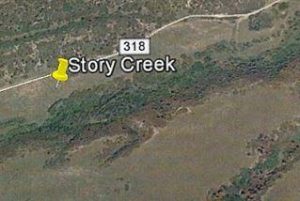Walsenburg Waltz - Page 3
Construction with Manuel Labor
 15 miles up a county road, with no electricity or running water, our dreams become projects. Build a cabin, string a fence, lay in a cistern. Pour concrete walls. Pour lots of concrete walls. Stand up a windmill, dig a trench, pump water up a mesa to tanks for gravity-fed irrigation systems. Fix a broken tractor. The entropy of the land: we’re always building, and things are always breaking down.
15 miles up a county road, with no electricity or running water, our dreams become projects. Build a cabin, string a fence, lay in a cistern. Pour concrete walls. Pour lots of concrete walls. Stand up a windmill, dig a trench, pump water up a mesa to tanks for gravity-fed irrigation systems. Fix a broken tractor. The entropy of the land: we’re always building, and things are always breaking down.
Under the direction of Randall Vision, we pound posts and string barbed wire to keep out the neighbor’s cattle. The small-batch cement mixer labors as we pour foundations and raise greenhouse walls. The cute little Kubota backhoe groans digging through hard dirt and harder rock on the hilltop, preparing holes for a pair of water storage tanks.
On a 105-degree morning we arrive at the cement-works yard in Pueblo, where the office manager shakes her head, "In seven years I’ve never seen a day when everything went right."
But we buy two 500-gallon cisterns anyway. They’ll deliver them Friday … sort of: they unload them fifteen miles down the road from Story Creek. How we’re supposed to transport two large, heavy, fragile tanks from there never occurs to them. Several conversations and days later, they send the truck to bring them the rest of the way in, to the holes awaiting them.
One, two, three
One, two, three
Build without ceasing,
Sweat, blood, and blisters,
Structures increasing.
The only way to get water from the pond to the tanks is to pump it but, we have no source of electricity. We acquire a windmill and Fred learns how to stand it up and mount the blades, balancing on the tiny platform twenty feet up, wrestling slabs of sharp tin into place then tightening the bolts so they’ll stay there. Once it’s up and running, the windmill’s a source of joy – lie in a hammock in the willows and watch it turn all afternoon. Gradually, the cisterns fill and water flows to the greenhouses.
